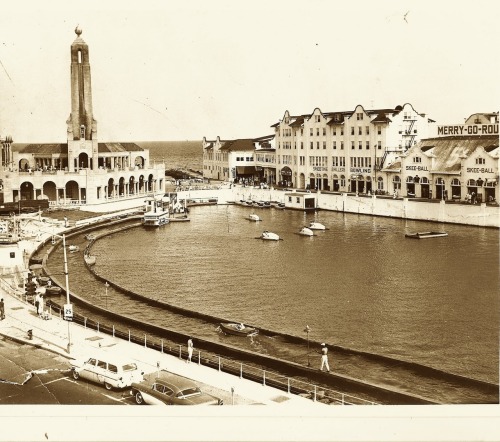In the mid-19th century the beaches of Monmouth County, then referred to as the “North Jersey Coast,” were steadily becoming a popular destination for people to rest and rejuvenate from the daily and seemingly perpetual stresses of the increasing urbanization and industrialization of New York, New Jersey and Philadelphia. As a society, these historic changes prompted people to periodically escape from the detrimental physical and mental health effects of industrialized urban life like pollution, disease and corruption. These abrupt disruptions delivered quite a shock to our collective system as a previously primarily agrarian people. Therefore respite into pure nature was becoming more and more desirable.
Since the beginning of recorded time religious worship has had its roots in nature. For example, the earliest known Jews, going back many thousands of years, primarily worshipped among massive acacia trees in stone walled groves throughout their green lands.
In this case, a Victorian Era preacher in Vineland, New Jersey named Reverend William B. Osborn found his calling to salvation through nature on the breezy beaches of what is now known as Ocean Grove, New Jersey. He arrived at these empty colonial beaches where he established a Christian community and named it accordingly in 1867.
Ocean Grove’s initial primary real estate investor, James A. Bradley of New York (after which neighboring Bradley Beach is named) bought the first lot of residential property in Ocean Grove and soon after bought up all the surrounding land that would eventually become the renowned city of Asbury Park.
The reason why Ocean Grove’s planning design is so unique is because the developers incorporated a new urban planning strategy known as a “set back” design. Each home facing the beach was “set back” in succession from its neighbor, thus ensuring a clear view of the ocean from each resident’s home.
The Industrial Revolution and huge population growth of the Victorian Era saw two sustained housing booms both directly before and after the founding of Ocean Grove in 1867 (one in the 1850s and another in the 1870s), which is why the community is home to a such a dense and numerous collection of elaborately designed and constructed Victorian homes. Victorian homes were also so popular because newfound economic advances made them mostly accessible to people from all walks of life.
Ocean Grove is nationally designated as an official example of a 19th century planned community and contains the largest aggregation of Victorian homes in the entire country – all of which is amazingly packed into only 0.372 square miles of land.














Recent Comments